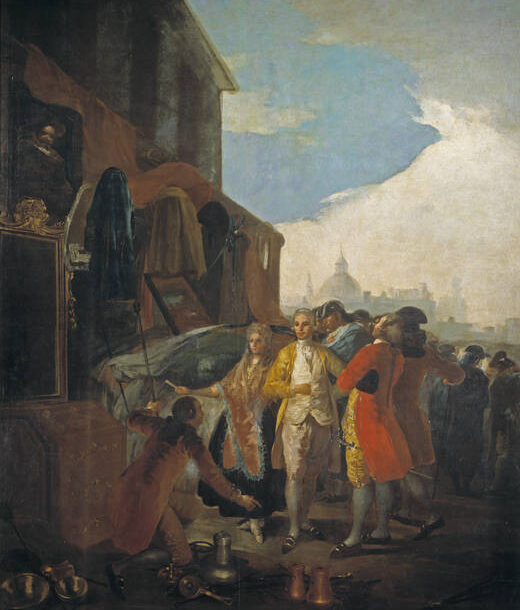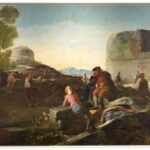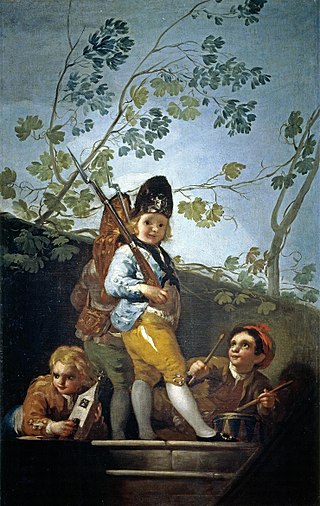
Goya emphasised on the cardboard delivery invoice the large number of figures included, each occupying his exact position in the game (forward, centre-half and fullback), together with twenty-five other figures of different ages and attitudes. Pelota games, of French origin, spread throughout Spain with great success in the Basque Country, where even then every village had its own fronton. Goya depicted the specific moment of the game, when the ball, on the ground, has reached the chaza, the place where the ball stops before it reaches the winning line. The resulting tapestry hung in the dining room of the princes of Asturias (the future Charles IV and Maria Luisa of Parma).
Collection: Images
Project: 3. Rural world and urban world in the formation of the European identity., 4. Family, daily life and social inequality in Europe.
Chronology: XVIII
Scope: Secondary Education, Baccalaureate, University
Resource type: Image
Format: Oil on canvaso (261 x 470 cm)
Source: Museo del Prado (Madrid)
Language: Spanish
Date: 1779
Owner: Álvaro Romero González (Modernalia)
Identifier: P000784
Copyright: Museo del Prado (Madrid)
Abstract: Historical amusement with a ball, possibly the predecessor of another game
Image
Tags







